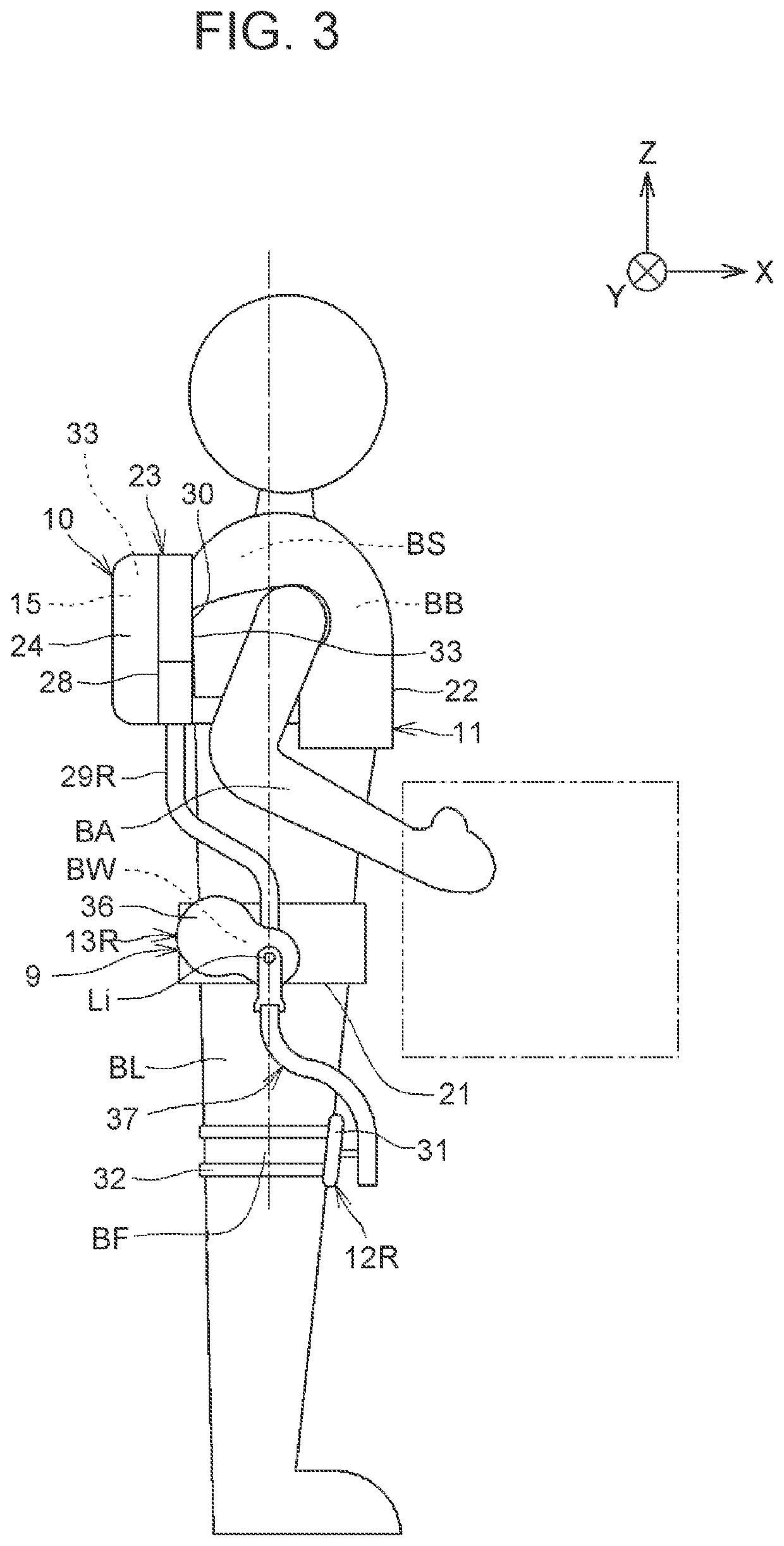Assist device
a technology of assist torque and actuating device, which is applied in the field of assist devices, can solve problems such as user discomfort, and achieve the effects of reducing the command value of first torque, avoiding the generation of assist torque, and reducing the likelihood of user discomfor
- Summary
- Abstract
- Description
- Claims
- Application Information
AI Technical Summary
Benefits of technology
Problems solved by technology
Method used
Image
Examples
example 1
[0107]When the user changes the positions of his or her right and left legs in the front-back direction, for example, to change his or her posture, and the forward swing angle θL of the idling leg at that time is equal to or smaller than the predetermined angle (five degrees), the first torque information I11 is selected in block B41 shown in FIG. 13. According to the first torque information I11, when the forward swing angle θL of the idling leg is small, for example, close to zero, the torque compensatory value is a relatively small value (t1). This torque compensatory value t1 is used as the first torque compensation value in the correspondence information I10. Thus, the first torque compensation value in the correspondence information I10 is set to a small value. As a result, according to the correspondence information I10, when the forward swing speed τLv of the idling leg is especially low, the assist torque command value τa is set to a small value and generation of large assi...
example 2
[0108]In Example 2 different from Example 1, when the user changes the positions of his or her right and left legs in the front-back direction, for example, to change his or her posture, and the forward swing angle θL of the idling leg at that time is larger than the predetermined angle (five degrees) as shown in (A) and (B) of FIG. 10, the second torque information I12 is selected in block B41. Also in this case, the value ΔτL obtained by subtracting the forward swing angle of the idling leg from the forward swing angle of the supporting leg is relatively small. Therefore, according to the second torque information I12, the torque compensatory value is a small value (t2). This torque compensatory value t2 is used as the first torque compensation value in the correspondence information I10. Thus, the first torque compensation value in the correspondence information I10 is set to a small value. As a result, according to the correspondence information I10, when the forward swing speed...
example 3
[0109]Unlike Examples 1 and 2, when the user is walking as shown in (C) of FIG. 10 and the forward swing angle θL of the idling leg at that time is equal to or smaller than the predetermined angle (five degrees), the first torque information I11 is selected in block B41. In this case, as the user is walking, his or her idling leg is located far back. This means that the forward swing angle θL of the idling leg has a large value on the negative side (e.g., τL=−15 degrees). In this case, according to the first torque information I11, the torque compensatory value is a relatively large value (t11). This torque compensatory value t11 is used as the first torque compensation value in the correspondence information I10. Thus, the first torque compensation value in the correspondence information I10 is set to a relatively large value. As a result, according to the correspondence information I10, the command value τa of assist torque to be provided to the idling leg becomes larger as the fo...
PUM
 Login to View More
Login to View More Abstract
Description
Claims
Application Information
 Login to View More
Login to View More - R&D
- Intellectual Property
- Life Sciences
- Materials
- Tech Scout
- Unparalleled Data Quality
- Higher Quality Content
- 60% Fewer Hallucinations
Browse by: Latest US Patents, China's latest patents, Technical Efficacy Thesaurus, Application Domain, Technology Topic, Popular Technical Reports.
© 2025 PatSnap. All rights reserved.Legal|Privacy policy|Modern Slavery Act Transparency Statement|Sitemap|About US| Contact US: help@patsnap.com



